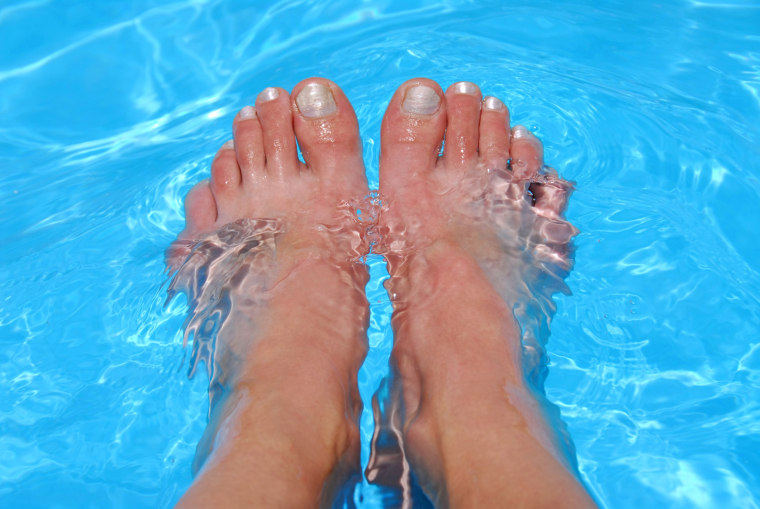If you find yourself wearing flip-flops around a pool this weekend, consider this: You may already come equipped with skid-resistant footwear, thanks to evolution. New research suggests that our toes and fingers prune up when they're exposed to water because that temporarily gives us the equivalent of treaded all-weather tires.
People have assumed that "when water hits your fingers, some absorption happens and they wrinkle for no good reason. This suggests it's more than that," says neuroscientist Mark A. Changizi, who's been studying the purpose of pruney fingers and toes. "I see it as another great example of the brilliance and beauty of evolution's design."
As we've all noticed at one time or another, fingers and toes wrinkle up when they're wet. They don't have to be sitting in a bubble bath, either. "If you're just walking around in bare feet on wet, damp grass, you'll still get that water contact that would lead to pruning just as if you're submerged in water," says Changizi, an author and director of human cognition at a company called 2AI Labs in Idaho.
It might seem like pruning is just the skin's reaction to getting filled with water. But why does the skin wrinkle instead of just getting plumped up like a water balloon? And why does the nervous system seem to be involved? Weirdly enough, fingers and toes don't prune in people with severed nerves.
Changizi, who studies how hands work, discovered research about the severed nerve phenomenon from back in the 1930s. It got him to thinking about pruning: "It wasn't just some physical reaction. It was designed, and there's a damn good reason for it."
In a new report in the journal Brain, Behavior and Evolution, Changizi argues that pruney fingers and toes appear to do two things: they create channels that help water drain away, and they provide some resistance against slipperiness. In some people, wrinkles actually appear all across a wet foot, potentially providing even more skid-proof-ness.
Essentially, wet fingers and toes temporarily transform from racing tires (which are smooth to provide more speed) to all-weather tires (which have treads for traction), Changizi says. He added that the channels created by pruney fingers are similar to those that drain rainwater from mountains.
OK, so wet fingers and toes help keep you from slip-sliding away. But is there more to this than food for thought for scientists and maybe Paul Simon's next hit song?
Absolutely, Changizi says. Manufacturers of shoes and tires might be able to learn from evolution's design skills, he says. "I would imagine there are ideas that would be informed by this."
Maybe next, someone can come up with a flip-flop that keeps you from slipping but doesn't flip or flop or look absolutely ridiculous. We could all benefit from that kind of evolution.
Have you noticed a benefit from pruney fingers and toes? Tell us in the comments.
